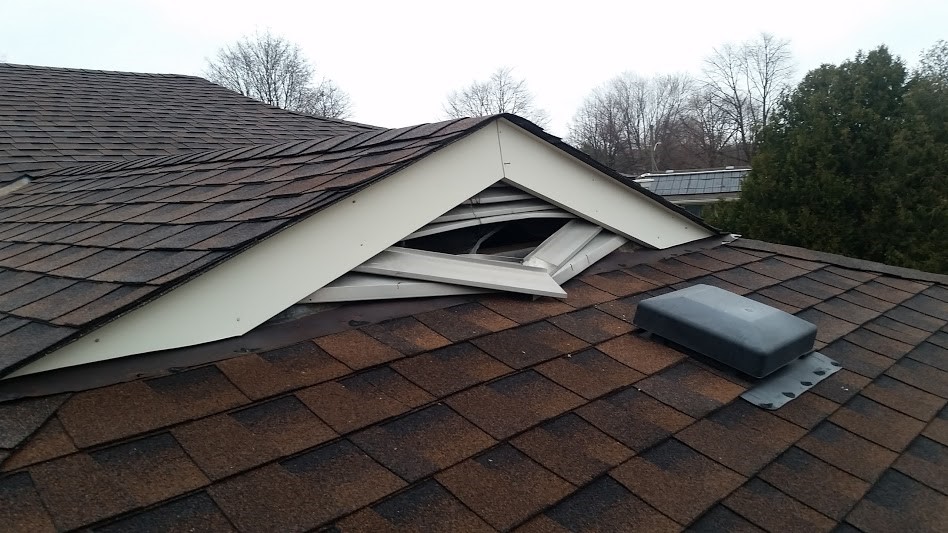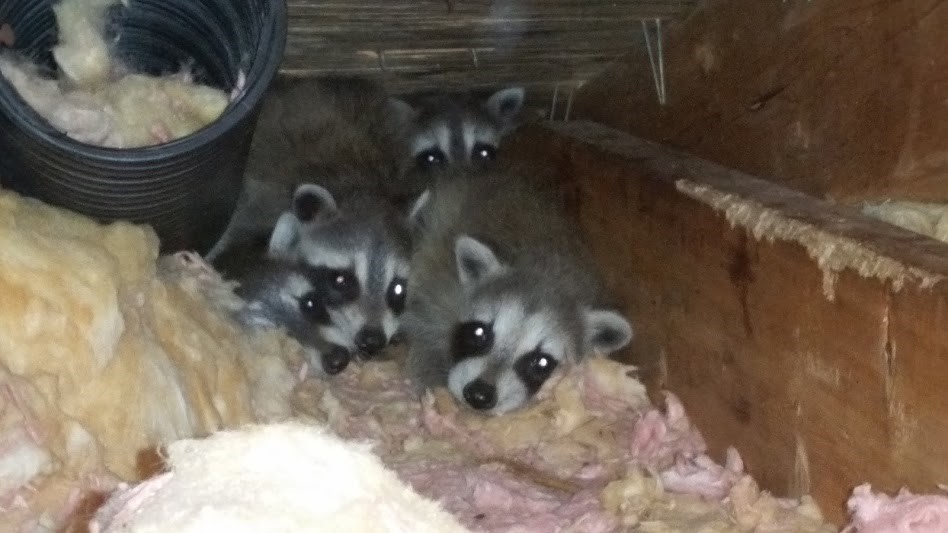So, your trap has been sitting in your yard for days. No raccoons. Nothing caught. It’s just there going unused. Shouldn’t this have been easier? The truth is trapping isn’t always the most effective way of removing wildlife. It’s best to leave it to the professionals.
Here are some reasons why your trap might not be successful in removing raccoons:
Wrong location
You could be placing your trap in areas with low raccoon traffic. If you have raccoons living in your attic there’s no guarantee that they will find the trap you’ve set in the yard. Placing a trap close to a food source, den site or latrine is your best bet. These are proven places the raccoons spend time and will increase your odds for catching one.

Raccoons damaged this siding in order to gain access to this attic.
Wrong bait
Raccoons are scavengers. They’ll eat pretty much anything but they do have their favourites and familiar foraging routes in any neighbourhood. Just because you put some food in a cage doesn’t mean the raccoon you’re trying to catch will chose it over other options available. They can find a meal in a different location. It’s best to keep baits fresh and rotate out foods that aren’t attracting raccoons.
Attracting the wrong animal
You can’t control what species will find their way into the trap. Just because you’re looking to catch raccoons doesn’t guarantee that’s what you’ll catch. Traps don’t discriminate and every year we receive dozens of calls from homeowners who have unwittingly captured a skunk and aren’t prepared to get sprayed releasing it. Even neighbourhood cats might stumble into the trap.
Some raccoons know better
You’re probably not the only one using a trap in your area. The raccoon you’re after might have been trapped before. They’ll learn from that experience. They’re not stupid. If they’ve been trapped before they might avoid traps all together afterward.
Stealing the bait
Raccoons have long arms and dexterous hands. They can reach in and out the cage and grab the bait before the door snaps shut. They’ll find a way to get that food. They’re quick and nimble.
Raccoon babies
During spring mother raccoons need secure places to have and raise their babies. This could be inside an attic, chimney or shed. It’s during this time that many homeowners will unwittingly trap and relocate a mother raccoon with babies stashed away somewhere inside their home. This is could lead to a litter of babies starving to death in some hard to reach place.

Raccoon babies inside an attic.
Skedaddle Humane Wildlife Control doesn’t just trap raccoons
Trapping raccoons is not as simple as it seems. Traps are a one-size-fits-all tool that can often cause unanticipated problems for homeowners. A professional raccoon removal service won’t rely on traps alone to solve a wildlife problem. There’s no substitute for experience and understanding of raccoon biology and behaviour. Skedaddle’s proven process involves a hands-on raccoon removal from their den site, cleaning their mess and securing the home against future re-entry.
Raccoon removal Montreal
Don’t waste your time with traps and other ineffective DIY methods. If you discover any raccoons living in your attic make sure to contact Skedaddle Humane Wildlife Control. We’ll remove any intruders and make sure it doesn’t happen again. In the end you’ll save yourself time and money.
Call today – 1-888-592-0387


